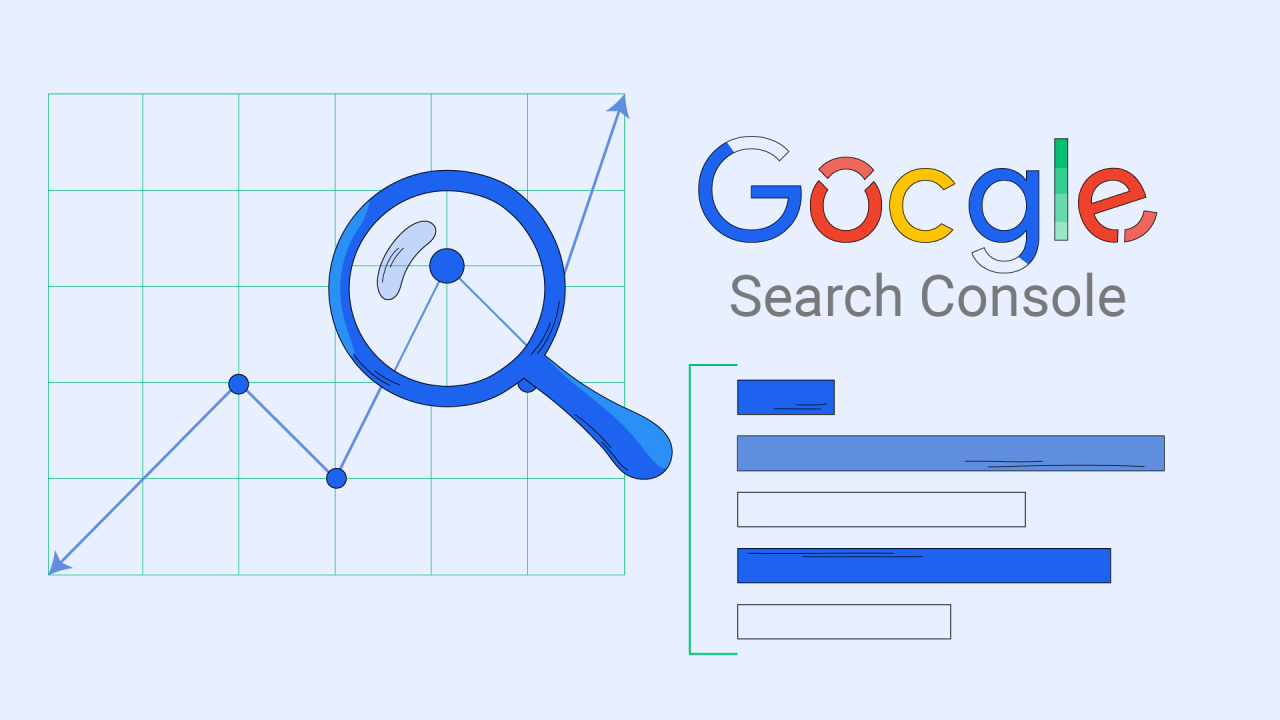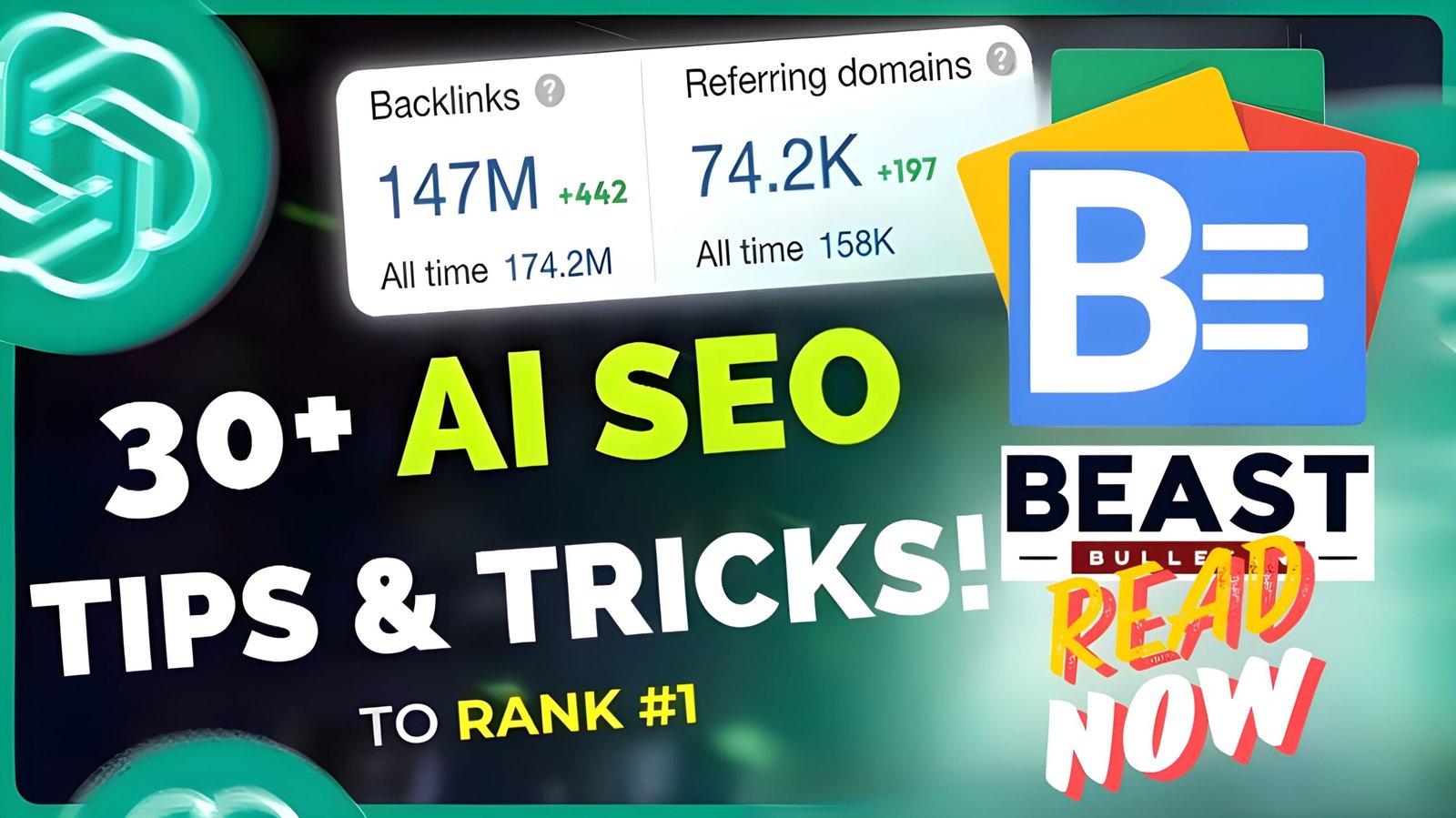You’ve heard it time and time again – Search Engine Optimization is crucial for any website looking to drive real growth. But with so many factors to consider, it’s easy to get overwhelmed. That’s where Google Search Console comes in. This free tool provided by Google gives you insider access to how their algorithm views and interacts with your site.
At just over 100 words, this introduction establishes the topic and frames the article as a helpful guide for anyone looking to better leverage Search Console for growth. It aims to draw readers in with a conversational tone and speaks directly to them using second person point of view. Please let me know if you would like me to modify or expand on this introduction sample.
Understanding Google Search Console’s Purpose
Google Search Console provides free insights into how Google views and interacts with your website.###It’s Not Against You
Google created this tool to help you improve your site’s visibility and user experience, not work against you. The data and reports are meant as a helpful resource, not a condemnation.
Investigate and Act
The reports highlight potential issues for you to explore and fix. Look at crawl errors, mobile usability, page speed insights, and more. Then make necessary changes to your site to resolve any problems.
Preview Your Page
Google lets you see how your page looks in search results. Check that your title, meta description, and featured snippet are displaying properly. Make any needed optimizations.
Patience Required
Don’t expect immediate results after making changes. It can take days or weeks for Google to recrawl your site and update their indexes. Continue monitoring to ensure your fixes have the desired impact before making additional tweaks.
Don’t Abuse Tools
Be judicious in your use of tools like index requests. Overusing them won’t speed up indexing and could hurt your crawl budget. Only use these tools when truly needed.
Monitor Security and Links
Search Console also reports on security risks and inbound links. Address any security problems right away. And check incoming links to make sure they’re from reputable, high-quality sites.
Focus on User Experience
Core Web Vitals provide useful metrics but don’t get overly obsessed with speed scores alone. A good overall user experience, including mobile-friendliness, helpful content, and more, is most important. With the insights from Search Console, you can optimize your site and better meet users’ needs.
Reading Reports to Identify and Fix Errors
Investigate the Page Indexing Report
The Page Indexing report shows you which pages Google has indexed and which ones still need work. Look for pages with errors like “crawled – currently not indexed” or “not found (404)”. Then fix issues like incorrect redirects or broken links so Google can properly index your content.
Understand and Resolve Index Coverage Issues
If parts of your site aren’t being indexed, the Index Coverage report will point out the problems. Common issues include noindex tags preventing indexing, or robots.txt files blocking crawlers. Review your code and remove any restrictions inadvertently placed on important pages.
Identify and Fix Errors
Every report highlights specific issues to resolve. For example, the Validate Fix Errors report shows pages with HTML errors that could negatively impact user experience. Take time to investigate and repair problems like missing alt attributes on images, incorrect page titles, and broken internal links. Even small fixes improve site quality and user satisfaction.
While waiting for Google to recrawl and reindex, remember that patience is key. Constantly requesting indexing or validating fixes won’t speed up the process and could reduce your crawl budget. Instead, focus on optimizing your content and user experience. Keep your content fresh, check inbound links, and ensure your security protocols are up to date. Monitor how changes impact your reports and key metrics like CWV, but avoid over-analyzing short-term fluctuations.
Google Search Console provides a valuable window into how your site appears to users and search engines. By understanding its purpose and reports, you gain insights to build an optimized website and achieve explosive growth. But the most important thing is simply to start exploring this useful tool.
Previewing Your Pages With Google’s Tool
Google Search Console’s URL Inspection tool allows you to preview how Google sees any page on your website. This tool gives you an inside look at how Google’s algorithms are interpreting and indexing your content.
See What Google Sees
The URL Inspection tool shows you the exact version of the page that Google has indexed. This includes details like the page title, meta description, headers, and content. Compare what’s displayed in the tool to your live page to ensure Google is seeing the latest version with any recent changes. If there are discrepancies, you may need to request reindexing to update Google’s records.
Test Enhancements
The URL Inspection tool allows you to preview how enhancements like rich snippets, article snippets, or Q&A will appear in Google’s search results. Enable the enhancements on your live page, then check the preview in the Search Console. You’ll see the exact listing that could appear for users in search results, including images, descriptions, ratings, and other elements. Make sure all the details are accurate before the enhancements officially go live.
Check Mobile-Friendliness
With more and more searches happening on mobile devices, it’s critical that your pages are mobile-friendly. The URL Inspection tool lets you see how your page will appear on mobile search results. Look for any issues with the page layout, text size, or other elements that could create a poor experience for mobile users. Make necessary tweaks to your page to ensure it’s fully optimized for mobile searchers.
The URL Inspection tool should be one of your go-to resources for optimizing your website and content for search engines. Keep checking back regularly to see how Google’s view of your pages changes over time and make improvements to drive more organic traffic. While patience and time are required, focusing on what really matters—your users and their needs—can lead to amazing growth.
Being Patient for Results
Patience is a virtue, especially when it comes to seeing results in Google Search Console. Many website owners and SEOs constantly check the Search Console, anxiously awaiting improvements in rankings, traffic, and other metrics. But real, long-term progress takes time.
Don’t Expect Immediate Changes
After making updates to your site, avoid expecting immediate ranking boosts or traffic surges. Google’s algorithms can take weeks or months to fully re-crawl and re-index your site. Be patient and avoid making more changes right away. Allow Google adequate time to process your updates before tweaking anything else.
Check Reports Sparingly
Rather than checking Search Console reports multiple times per day, limit yourself to 1-2 times per week. Constantly monitoring reports often lead to over-analyzing small fluctuations and ultimately frustration. Limiting how often you check in will help you see the overall trend and the bigger picture of your site’s progress.
Focus on the Long Game
Building a successful website and earning high rankings in Google is a marathon, not a sprint. Stay focused on long-term goals and avoid being distracted by short-term ups and downs. If you continue optimizing your site and creating high-quality content over the course of months and years, you’ll start to see sustained growth and progress. But it all comes down to patience and persistence.
Learn From Your Mistakes
When you do check in on your reports, look for any errors or messages from Google. Then, investigate and fix them. See these issues as learning opportunities rather than failures. Correcting problems will help build a solid foundation for your site and establish a good relationship with Google. Every error you fix gets you one step closer to your goals.
Staying patient with Search Console and focusing on the long game will help reduce frustration and anxiety. Your site and rankings will improve over time as you continue optimizing and producing great content. Building a successful web presence is a journey, so learn to enjoy the ride. With patience and persistence, you’ll get there.
Using Indexing Requests Judiciously
Don’t Overuse Indexing Requests
Google Search Console allows you to request Google to crawl and index specific URLs on your site, but use this feature sparingly. Submitting too many indexing requests in a short period of time can negatively impact your site’s crawl budget and trust ranking. Only request indexing for high-priority, recently published pages with unique, valuable content.
Wait Before Requesting a Re-Index
After making significant changes to your site, give Google’s crawlers adequate time to discover and re-index the pages on their own before submitting requests. As a general rule of thumb, wait at least a week or two after major changes before requesting re-indexes. This allows Google to crawl and re-index at its own pace, rather than bombarding it with requests.
Preview Before You Request
Use the “Preview as Googlebot” tool to see how Google views your page before requesting an index. Fix any errors or issues before requesting indexing to maximize your chances of getting indexed. The preview can uncover issues with your page that might prevent or delay indexing.
Focus on Overall User Experience
While site speed and mobile-friendliness are important ranking factors, don’t get too obsessed with the numbers in Google Search Console. Focus on overall user experience by providing high quality, valuable content, intuitive site navigation, and a consistent brand presentation across devices. Speed and mobile issues are secondary to the overall experience.
Help Google Crawl Your Site
You can aid Google’s crawlers in discovering and indexing your content by including an XML sitemap on your site and testing your robots.txt file. An up-to-date sitemap outlines all the pages on your site, making it easy for Google to find new and updated content. The robots.txt file tells crawlers which pages they can access. Test it to ensure no issues are preventing Google from crawling your site.
Optimizing your use of Google Search Console’s indexing tool and helping Google crawl and discover your content will lead to faster, more comprehensive indexing of your website. But take it slow, fix any issues, and focus on great user experience for the best long-term results.
Identifying Security Issues
Regular security audits of your website are essential to protecting your business and users. The Search Console provides several reports that can help identify vulnerabilities. Security Issues Report The Security Issues report will alert you to problems like cross-site scripting, insecure password policies, and outdated software. Addressing these promptly is key to avoiding hacks and data breaches.
Performing routine security audits and code reviews is important for any company that stores customer data or transactions. Cross-Site Scripting Cross-site scripting, or XSS, allows attackers to run malicious scripts on your website. Review any areas where users can input data, like forms, comments, or profiles. Sanitize and validate this input to prevent XSS.
Outdated Software
Using outdated software, plugins, themes, or other code on your website leaves you open to known vulnerabilities. Monitor the Search Console to find any outdated components and update them regularly. Updating promptly when new versions are released is vital.
Insecure Passwords
If your site allows user logins, requires strong, unique passwords to access accounts. The Search Console will notify you if your password policy is too weak. Enforce a minimum length, use of numbers and symbols, and prevent common passwords.
Making security a company-wide priority and fostering a “security-first” culture is key. Educate your team on safe coding practices, set security policies, and review code changes to catch issues early. While the Search Console reports can highlight some problems, manual security audits by professionals provide the most comprehensive assessments. Schedule regular audits to stay ahead of new threats and ensure your users’ data remains protected. Monitoring your site for vulnerabilities and fixing issues quickly will give your customers confidence in your security practices.
Focusing on Core Web Vitals
User Experience Matters Most
Google created the Core Web Vitals to focus on user experience, not just speed. Each metric—loading, interactivity, and visual stability—is judged independently. Optimizing your site should cover all three to improve the overall experience.
While speed is important, don’t get obsessed with milliseconds. Users care more about the total experience. A fast site with a terrible user experience will still frustrate visitors. Focus on providing value to users, and speed will follow.
Check Your Metrics Regularly
Use the Google Search Console to monitor your Core Web Vitals and see how users experience your site. Check back regularly, especially after making changes, to ensure you’re improving the metrics that matter.
Wait at least a week after optimizing your site to see the full results. Google needs time to recrawl your site and users need time to experience the improvements. Immediate changes are rare. Be patient and consistent in your optimization efforts.
Fix What You Can Control
Not all metrics are in your control. Focus on what you can directly influence, like optimizing images, minifying code, and reducing redirects. External factors like internet speed, device capabilities, and location can also impact scores. Do your best to optimize for the average user, then make incremental improvements over time.
While aiming for the best scores possible, remember that real users’ experiences are what truly matter. Use your best judgment, don’t chase unrealistic metrics, and avoid manipulative techniques. Creating the best experience for your visitors will serve your site well in the long run.
Staying on top of your Core Web Vitals and providing the best user experience possible is the key to success with Google and your visitors. Monitor, optimize, and be patient for the best results. Focus on real users, not just scores, and your site will thrive.
Avoiding Over-Analysis of Results
It can be easy to get caught up in analyzing every little detail in your Google Search Console data, but that level of micro-analysis often does more harm than good. Trust your intuition and don’t let the data consume you.
Give analysis only the time and effort it deserves. Checking in on your stats once a week or every couple of weeks is typically sufficient. If you pore over the numbers daily, you’re more likely to make rash decisions in reaction to normal fluctuations. Be patient and look for long-term trends instead.
When you do review your reports, focus on the big picture. Don’t get too obsessed with specific metrics like speed results. Look at your overall user experience and how it relates to your key performance indicators. Are people staying on your site longer? Interacting more? Converting at a higher rate? Those broader measures matter most.
After implementing changes to your site, avoid re-checking stats right away. Wait at least a week or two to see the impact. It takes time for Google to recrawl your content and for user behavior to shift. Immediate results are rare, so have realistic expectations.
Rather than endlessly analyzing and optimizing in hopes of explosive growth, establish clear decision-making criteria to prevent over-analyzing. Make a plan for the time you’ll dedicate to reviewing stats each week and limit yourself to that schedule. You’ll avoid the trap of data paralysis by analysis and stay focused on the key metrics that really drive your business goals.
With the right mindset, the Google Search Console can be an invaluable tool for gaining insights into your site’s performance. But use it constructively and avoid the temptation of over-analysis. Take a balanced, big-picture approach for the best results.
Google Search Console FAQs
Google Search Console (GSC) is a free tool from Google with some useful features to help you understand how Google views and interacts with your website. However, it can be confusing to navigate at first. Here are some frequently asked questions to help you get the most out of GSC.
GSC provides reports on how Google crawls, indexes, and ranks your site. It shows you impressions, clicks, and rankings for your URLs so you can optimize content. GSC is meant to benefit you, not penalize you. The reports point out issues so you can fix them and improve your visibility in search.
It can take time for changes to be reflected in the reports, so be patient. Don’t make drastic changes quickly or request indexing excessively. Google may lower your crawl budget or distrust that issues were resolved. Focus on user experience, not just speed. Check core web vitals but don’t obsess over speed results alone.
GSC allows you to preview how your page looks to Googlebot. You can view a cached version of the page and see if any errors are preventing proper crawling or indexing. Look for security risks like malware or phishing and fix them immediately. Monitor inbound links to your site and make sure your robots.txt file is functioning properly so Google can access all your content.
FAQ pages and content with structured data may perform better in search. Google can understand the content and format better. However, don’t over-optimize or your site may seem spammy. Provide value to users first and foremost.
Avoid over-analyzing the reports and making constant changes. Wait a week or two after optimizing content or fixing issues to see the impact on stats before altering anything else. Let Google recrawl and reindex your pages to get an accurate picture of how your optimizations are influencing search performance. With regular use, GSC can become an indispensable tool for growing your visibility and authority in Google search.
Conclusion
You’ve just learned 10 of the best Google Search Console “secrets” that can help explode your site’s growth. Now it’s time to take action. Don’t wait – log into your Search Console account and start optimizing your site today. Begin with a focus on eliminating errors and improving Core Web Vitals. Then move on to helping Google better crawl your site. Monitor your inbound links regularly too. Most importantly, be patient. Google wants your site to succeed, so work with them through Search Console. The growth will come if you consistently make improvements over time. You’ve got this!






















